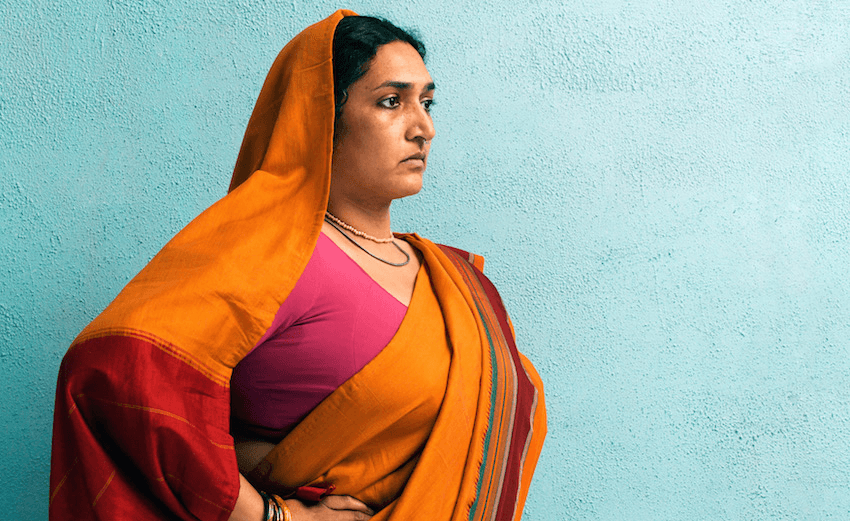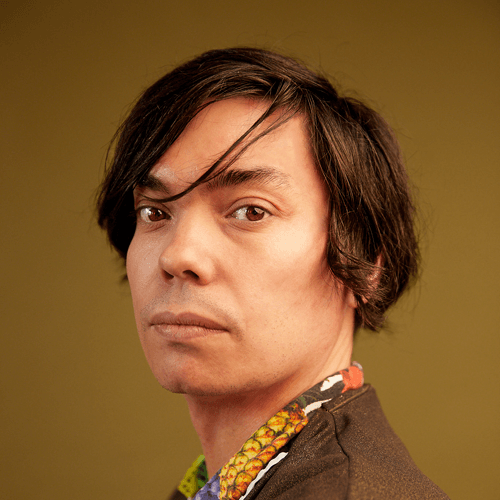A Fine Balance opened yesterday in Auckland, marking a historic collaboration between two pillars of Auckland theatre. Sam Brooks talked to two of the team – Prayas president Amit Ohdedar and director Ahi Karunharan – about the show.
On paper, it seems like a no-brainer of a collaboration. Auckland Theatre Company, arguably the biggest theatre company in the country, joins forces with Prayas Theatre, the country’s biggest South Asian theatre company, for a production of a play adapted from one of the most fondly remembered books from the ’90s. There’s no doubt that it’ll be a show worth seeing.
But even more fascinating is the story behind the collaboration.
Prayas Theatre President and co-founder Amit Ohdedar says that talk about the companies collaborating together started in 2017, and really cemented in 2018 when ATC were confirming their programme for 2019. “Lynne Cardy (associate director at ATC) has been supporting Prayas for many years, she comes to our shows and really appreciates our work. We would go off and on with opportunities, but we were so busy with our other productions.”
Prayas Theatre have been one of the leading lights of the Auckland Theatre scene for the past few years. Their works have moved into more mainstream and alternative theatre spaces, including multiple sell-out seasons at The Basement Theatre (and I mean real sell-out seasons, the kind of seasons that sell out before they open).
It’s a savvy move for Auckland Theatre Company to partner with the company, allowing them to diversify their programming – which has come under fire in recent times – beyond the mainstream, crowd-pleasing work that the company has to do to fill venues. To the company’s credit, that diversification is working wonders; when I hear people speak kindly of ATC shows, it’s more often than not their youth shows (the Here and Now series of work) or their work that plays smaller venues (the multiple award-winning Still Life of Chickens), than shows in their flagship venue.
Even the choice of show is smart. Ohdedar notes that they’d done the show at TAPAC, a for-hire venue in St. Lukes, in 2015, and they’d been trying to do the show since 2012. Ahi Karunharan, who directed the show back in 2015 and returns to direct this production, confirms this savviness. “We haven’t chosen a work that is exoticizing or making this a tourist-peephole experience. I think the work is quite heavy and dark. People coming and expecting a nice Bollywood experience are not gonna get that.”
The script, adapted by Sudha Bhucar and Kristine Landon-Smith, for London’s Hampstead Theatre, comes from Rohinton Mistry’s incredibly popular Man-Booker Prize winning novel, A Fine Balance. Mistry’s novel is set in an unnamed and unidentified city in India, and unravels over nine years, kicked off by ‘The Emergency’, a 21 month period during which prime minister Indira Gandhi declared a state of emergency across the country.
It’s the kind of novel that was a sort of lightning rod for discussion and critical acclaim at the time, and its relevance and warm reception hasn’t dimmed since. I’ve read the book twice, once in high school and once in university, and it achieves the dual feat of being minutely detailed on an epic canvas. The book’s Man-Booker-annointed pedigree is fortunate for both theatre companies – it’s still a mainstay on bookshelves, and I’d bet a not-inconsiderable amount of money that it’s fondly remembered by ATC’s core audience.
Karunaharan mentions the novel’s ubiquity amongst Pākehā. “I hadn’t read the book, but a lot of my friends had. I was surprised that a lot of my Pākehā friends had the book, and that it had a profound affect on their life. It shifted so much thinking for them.” Despite that response, Karunharan put off reading the novel until Amit badgered him into directing the play for Prayas Theatre in 2015.
But this kind of collaboration doesn’t come without risks. A Fine Balance not only marks ATC’s first mainstage collaboration with a community theatre, but the first time a cast of entirely South Asian actors will be on its mainstage.
There’s an unfortunate canary-in-a-mine kind of pressure that happens when any community company collaborates with a mainstream monolith – just ask Ahi Karunaharan. “Two weeks ago, we had to stop and take the pressure off ourselves. We’ve been carrying that pressure with us – it’s the first time we’re doing this thing in this context, we can’t fuck this up. If we fuck this up then the organisation won’t engage with other communities or voices, because for so long systems have been in place to prevent certain types of work.
“But the moment I stopped and took stock of it, I knew I needed to let that go.”
Ahdedar speaks kindly of ATC, which has welcomed them in. “To be perfectly honest, we were a little sceptical in how we’re going into a new space, but the whole ATC staff have been really wonderful and making us feel comfortable. That’s quite important for us, because most of Prayas have other day jobs, this is not our full-time job.”
As for the risk? It’s a calculated one, and I think one that’ll pay off. There’s a reason why Prayas Theatre’s cultural stock has been building for the past few years – they make really good shows that stand as a crucial point of difference from a lot of mainstream theatre. And honestly, a lot of alternative theatre too.
“The work talks about gentrification and beautification of cities, and those are uncomfortable conversations that we can’t necessarily have about New Zealand,” Karunaharan says. “But perhaps having a lens of a difference – like this show being set in India in the 70s – might allow us to engage in these conversations.”
It’s a point that’s often missed when talking about works that are different from the norm. And this collaboration shows that the ‘norm’ (naturalistic shows with white people in them, to generalise) is changing. By refracting hard conversations through another time and place, we’re able to engage with them more fully than if we were being confronted by them directly.
It’s hardly a revolutionary concept, but it’s surprising how few people are willing to apply it when they actually go out and engage with art.
But maybe it’s just about seeing something different. Karunharan states it bluntly: “If you look at the engagement with international festivals, and other works of different, I think audiences are just hungry for different voices and different korero.
“Are Auckland audiences ready for this difference? Yes.”





